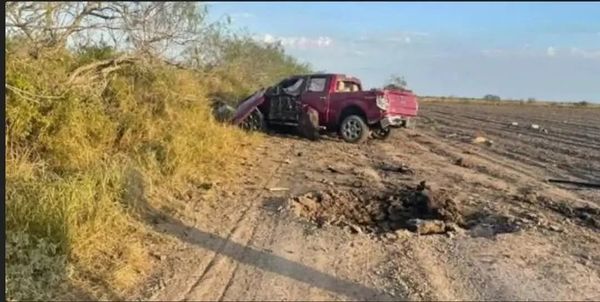The first step to buying farmland in Minnesota is probably, well, already owning farmland.
It's expensive and difficult, making the threshold for entry too high and risky for many.
Especially if you're looking at the swath of fertile acres south of the Minnesota River, the growing fields that have spawned household names such as Green Giant. The land there is known for its rich, black, productive soil and doesn't come cheaply.
"You aren't going to find a lot of young farmers buying land themselves," said David Bau, agriculture business management educator with the University of Minnesota Extension, speaking from his office in Worthington in mid-August. "It'll probably be their parents who buy the farmland."
But for the rest of us outsiders, the first step toward buying farmland is, probably, deciding you're bold enough to get into farming itself. It's back-breaking work that's hot and uncomfortable in the summer. It can require tedious book-keeping and test one's nerves in the winter.
And it's about the most rewarding job you can find, if you can keep it.
"We're the married people who could never divorce," said Mhonpaj Lee, a Washington County farmer summing up her relationship to farming, which has been her career for the last 15 years. "I always say, 'Mom, we should stop farming!' But the minute we stop farming, you gain weight, you have bad cholesterol. Mentally, you need it."
But how to get that farmland — especially for first-time, beginner farmers — is next to impossible, and often takes help from outside, sometimes anonymous, benefactors.
More than a decade ago, Bryan Simon, who pastures goats on 217 acres of what he calls "one of the most beautiful farms in Grant County" in western Minnesota, had an angel investor. In 2010, he and his wife, Jessie, were approached at a sustainable agriculture conference by a couple willing to buy up farmland for others to work.
Two years later, the Simons were working the farm. Five years after that, they owned the place.
"We got really lucky; undoubtedly, we are atypical," Bryan Simon said. "Ours isn't flat and square and black. But we weren't setting out to do conventional beef [or crops]. We wanted to do it different with more sustainable ag."
It was a similar story for Janssen Hang at the Hmong American Farmers Association — often called the HAFA Farm — in Dakota County. Over a decade ago, the cooperative received good news when an anonymous donor stepped forward to purchase farmland right along Hwy. 52 to help them kickstart 150-plus acres of vegetable farms. Nearly a decade later, after years of renting, they're finalizing the land purchase.
"Without long-term land access, you're always at the mercy of the landowner," Hang said. The Vermillion Township land has allowed them to avoid "some of the obstacles that Hmong farmers have encountered over the last 30 years," said Hang, including abuses resembling the sharecropping era.
In large part, prized Minnesota farmland remains off-limits for many small producers who aren't able to cashflow bids exceeding millions of dollars to buy in the heart of productive agriculture country, where corn and soybean are king. In recent years, farmland has attracted bigger investors, many living far from farm country. As of 2021, tech billionaire Bill Gates is the largest farmland owner in America.
For decades, however, many smaller investors — often with familial ties to Minnesota farms — have found acreages a proven, secure and personally satisfying venture. The brother-sister duo behind Fladeboe Land, a longtime brokerage specializing in the sale of Minnesota farmland, helps beginning investors and farmers navigate buying a piece of land by starting with what they know.
"For a lot of people, they start by looking at a place they know," said Glen Fladeboe, co-owner and broker of Fladeboe Land.
After that? Soil type.
"There is a simple line in farmland real estate that says, 'Flat, black and square," said Fladeboe. "What they don't want is winding streams and all of a sudden the planter is going in weird angles."
USDA maps out plots via a Crop Production Index, measuring the soil's nutrients. There's more tire-kicking on a piece of farmland, including drainage and easements. Land with hills can decrease the price. If it's tilled or irrigated the price can also fluctuate.
"It takes tenacity to buy farmland," said Kristine Fladeboe-Duininck, co-owner and broker. "But it is achievable."
This past spring, as commodity prices for corn and soybeans spiked to highs not seen in a decade, land prices inevitably followed. Land values jumped up as much as 25% in southwestern Minnesota, with sales of nearly $16,000-an-acre in Rock County. The highest, average rental rates in 2021 came in south central Watonwan ($252 an acre) and Faribault counties ($244), according to the University of Minnesota Extension.
"That land will come up maybe once every 30 years or longer," said Bau. "So when you want to get an opportunity to buy that land, you have that once-in-a-lifetime opportunity."
Some resources are offered to young, beginning and small farmers, from state tax credits to loans. Sometimes the help isn't enough. Simon noted that when hundreds of acres become available in Grant County, locals will often guess at which of the region's largest three landowners will sweep up the property.
For Lee, whose farm a few years ago became the first Hmong-owned certified organic farm in the U.S., she and her husband took advantage of USDA, low-interest financing to overcome traditional barriers for new land buyers when buying their plot of land by Hugo. Now they're brimming with zucchini.
"I have so much zucchini I could feed a village," said Lee. "We're trying to find markets. We're trying to save the world from hunger."
Lee's also not getting any younger, she lamented, noting that a recent volleyball game reminded her that her body — even in farm-shape — takes longer to recover from physical activity. But she loves the work and hopes to pass the farm onto her family.
"They are afraid of ticks right now," Lee said of her children.
But she hopes to build a home on their farm one day. She can do that. It's her land.
"It's so expensive," said Lee. "But that's still the dream."







